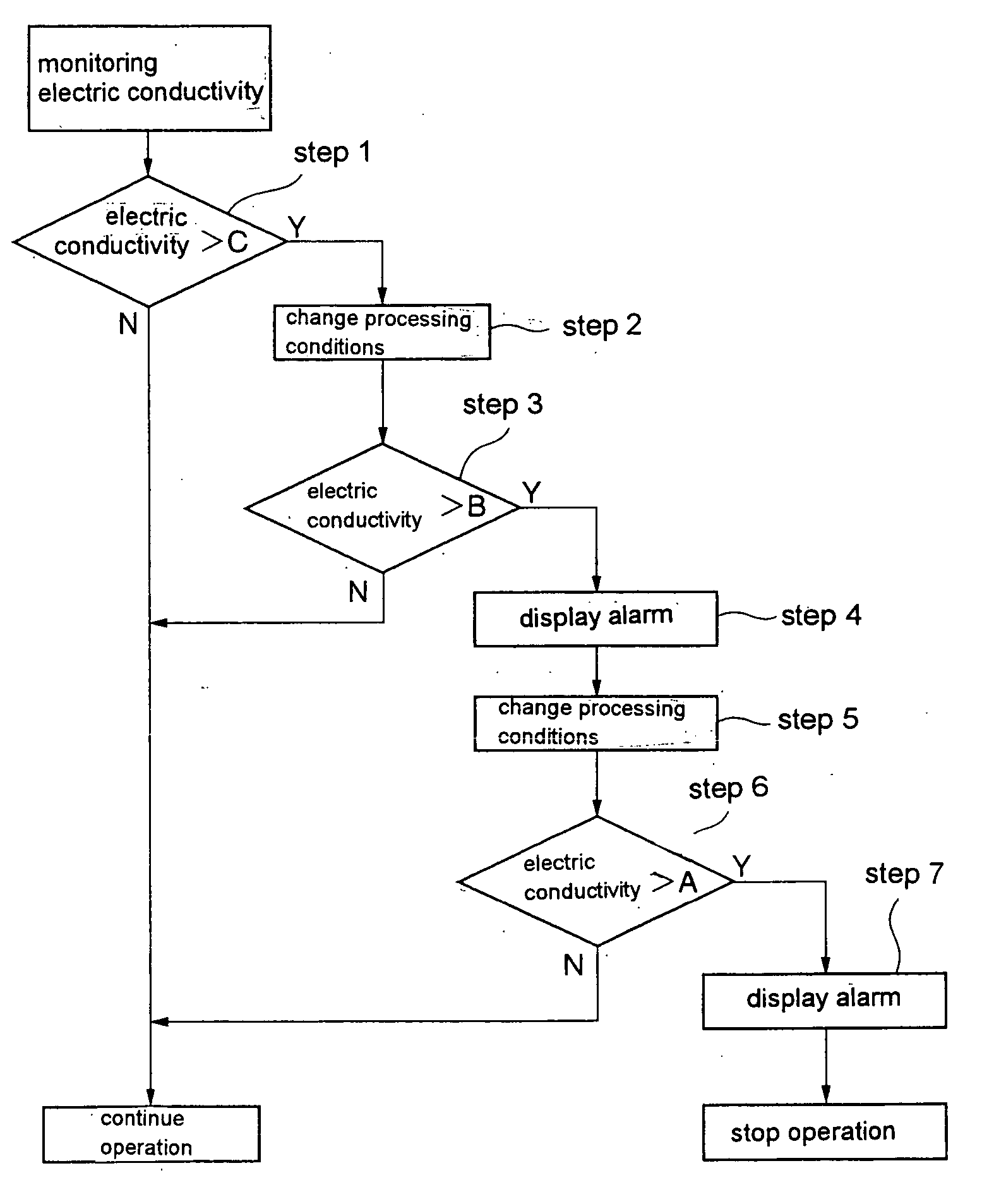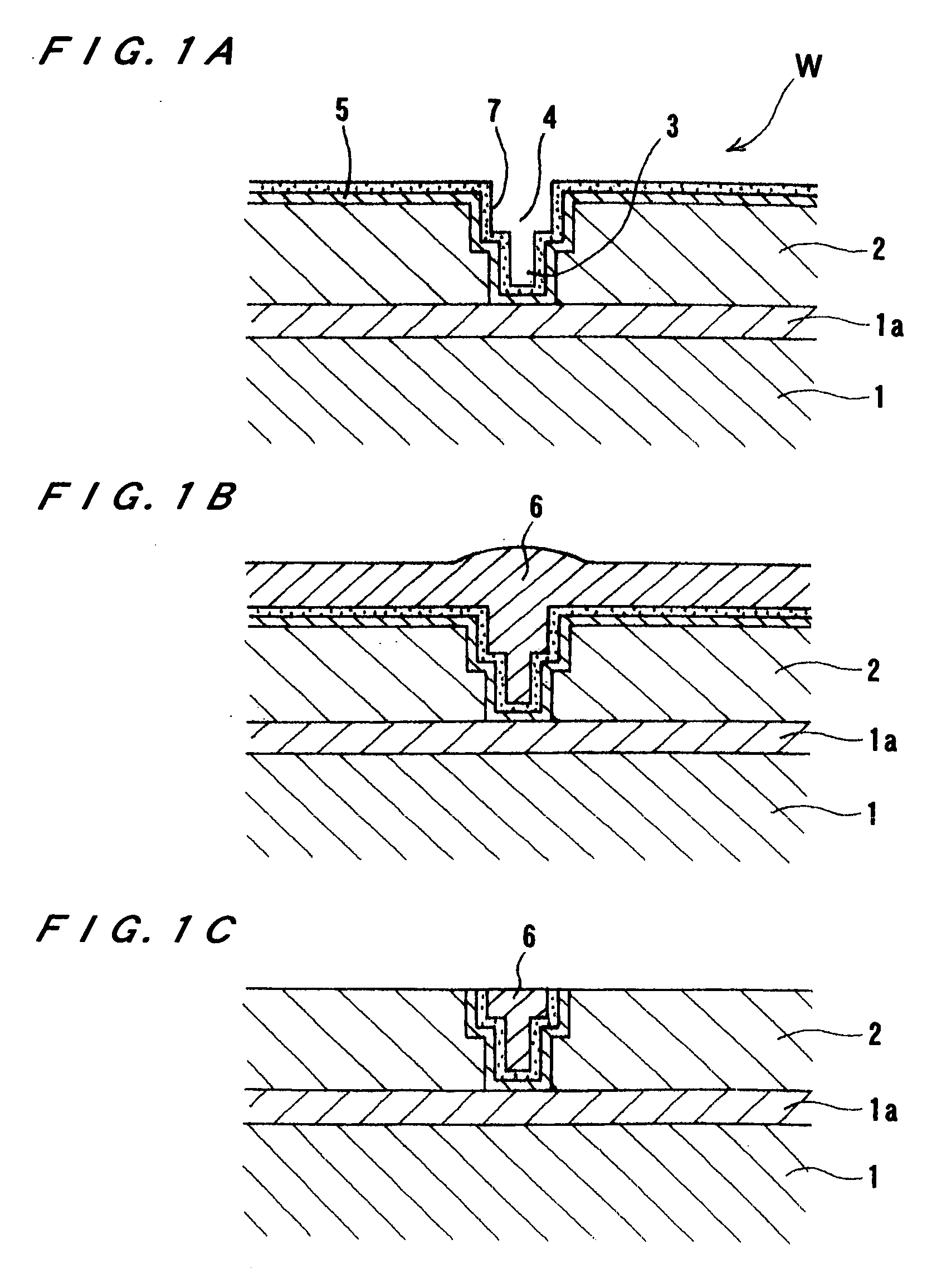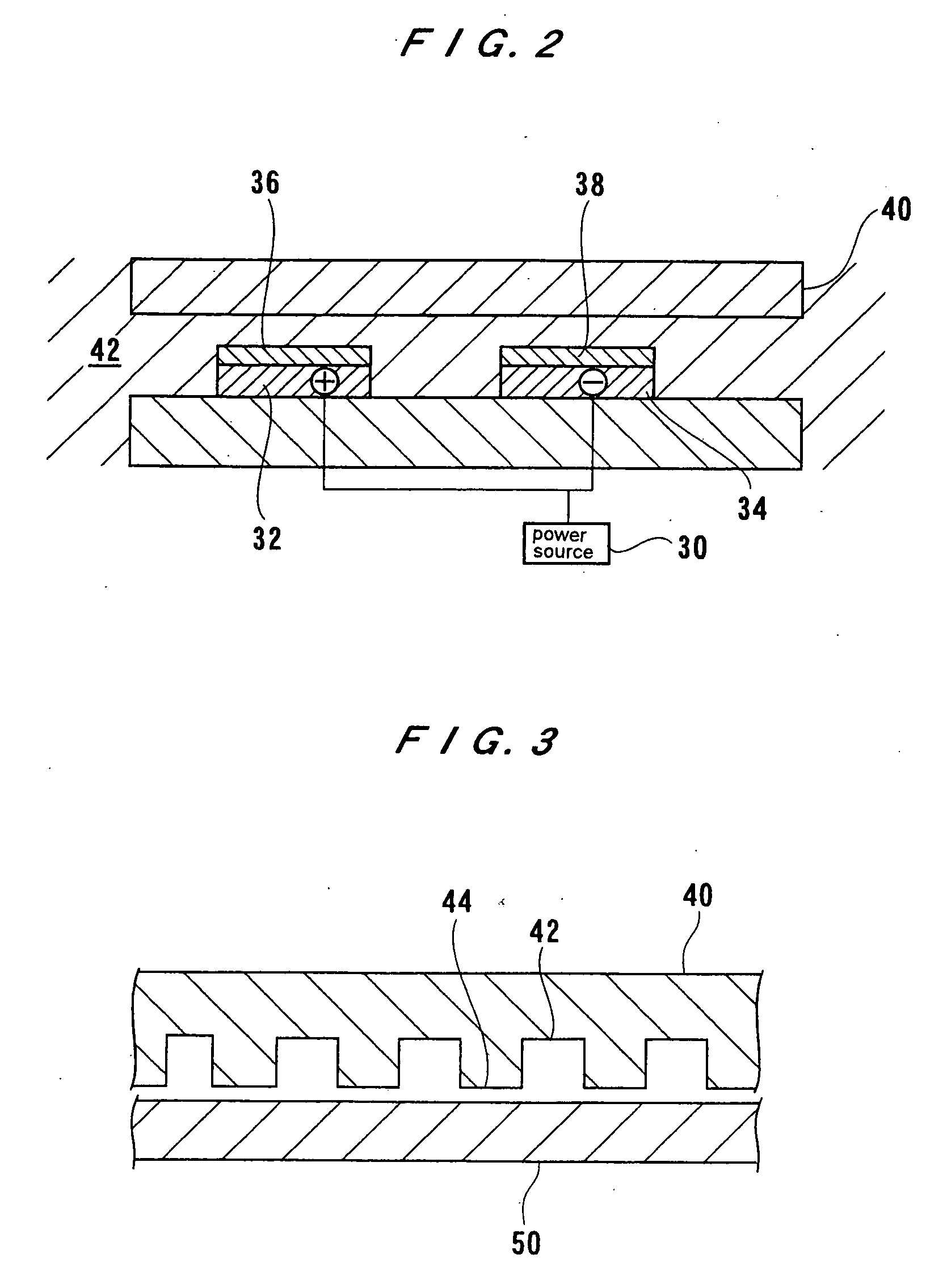Electrochemical machining device and electrochemical machining method
a technology of electrochemical machining and electrochemical processing, which is applied in the direction of machining electric circuits, manufacturing tools, electric circuits, etc., can solve the problems of deteriorating workpiece properties, large number of defects, and constant so as to suppress the change of fluid electric conductivity and improve flattening properties
- Summary
- Abstract
- Description
- Claims
- Application Information
AI Technical Summary
Benefits of technology
Problems solved by technology
Method used
Image
Examples
example 1
[0276] A sample (workpiece) for electrolytic processing was prepared by forming a 1.5 μm thick copper film by electroplating on a wafer having a diameter of 20 cm. A current-carrying portion of a platinum plate, on which a diaphragmatic ion exchanger and a porous ion exchanger are superimposed, was used as a processing electrode. Nafion 117 (trademark, DuPont Co.) was used as the diaphragmatic ion exchanger; a polyethylene non-woven fabric having a sulfonic ion-exchange group, introduced by graft polymerization, was used as the porous ion exchanger. The processing electrodes and the wafer were sunk in a water tank filled with ultrapure water, and the wafer was rotated at 500 rpm by a rotating machine. The processing electrodes were connected to a cathode of a bipolar power source, while a brash electrode (feeding electrode) was connected to an anode, and the brash electrode was brought into contact with the rotating wafer. The lowest potential of the bipolar power source was set at ...
example 2
[0277] A sample (workpiece) for electrolytic processing was prepared by forming a 1.5 μm thick copper film by electroplating on a wafer having a diameter of 20 cm. A processing electrode was composed of a diaphragmatic ion exchanger, a porous ion exchanger and a current-carrying portion of a platinum plate. Nafion 117 was used as the diaphragmatic ion exchanger; a polyethylene non-woven fabric having a sulfonic ion-exchange group, introduced by graft polymerization, was used as the porous ion exchanger. The processing electrodes and the wafer were sunk in a water tank filled with ultrapure water, and the wafer was rotated at 500 rpm by a rotating machine. The processing electrodes were connected to a cathode of a bipolar power source, while a brash electrode (feeding electrode) was connected to an anode, and the brash electrode was brought into contact with the rotating wafer. The pulse wave of the bipolar power source was set in a constant current mode such that an electric current...
example 3
[0278] A sample (workpiece) for electrolytic processing was prepared by forming a 1.5 μm thick copper film by electroplating on a wafer having a diameter of 20 cm. A processing electrode was composed of a diaphragmatic ion exchanger, a porous ion exchanger and a current-carrying portion of a platinum plate. Nafion 117 was used as the diaphragmatic ion exchanger; a polyethylene non-woven fabric having a sulfonic ion-exchange group, introduced by graft polymerization, was used as the porous ion exchanger. The processing electrodes and the wafer were sunk in a water tank filled with pure water having an electric conductivity of 3 μS / cm, and the wafer was rotated at 500 rpm by a rotating machine. A slidax was provided as a power source. A diode was installed on the output side of the slidax power source in order to cut the negative potential half-waves. The diode output side was connected to a brush electrode, and the brush electrode was brought into contact with the rotating wafer. A f...
PUM
| Property | Measurement | Unit |
|---|---|---|
| electric conductivity | aaaaa | aaaaa |
| positive potential time | aaaaa | aaaaa |
| electric conductivity | aaaaa | aaaaa |
Abstract
Description
Claims
Application Information
 Login to View More
Login to View More - R&D
- Intellectual Property
- Life Sciences
- Materials
- Tech Scout
- Unparalleled Data Quality
- Higher Quality Content
- 60% Fewer Hallucinations
Browse by: Latest US Patents, China's latest patents, Technical Efficacy Thesaurus, Application Domain, Technology Topic, Popular Technical Reports.
© 2025 PatSnap. All rights reserved.Legal|Privacy policy|Modern Slavery Act Transparency Statement|Sitemap|About US| Contact US: help@patsnap.com



